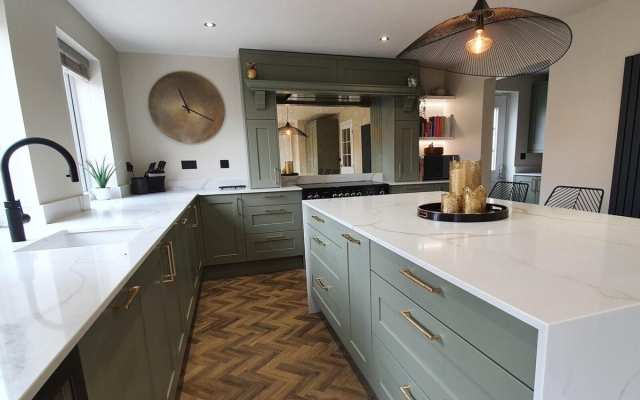Designing a kitchen is an exciting but complex task that requires careful planning to ensure a beautiful, functional space. Whether you’re remodelling your kitchen or building one from scratch, knowing the key dos and don’ts can help you avoid common mistakes and maximise your investment. Here’s a guide to help you navigate the essential aspects of kitchen design successfully.
Do: Plan Your Kitchen Layout with Precision
A well-planned layout is crucial in any kitchen design. Think about the flow between your main work areas—the sink, hob, and fridge—and ensure these elements are positioned efficiently. This classic ‘kitchen triangle’ helps to streamline movement and improve the overall usability of your space.
Don’t: Overcrowd the Kitchen Space
Avoid trying to fit too much into your kitchen, as overcrowding can make the area feel cramped and hinder movement. Ensure there’s sufficient space between countertops, cabinets, and islands, allowing for at least one metre of walking space to keep the kitchen functional and comfortable.
Do: Invest in High-Quality Kitchen Materials
The materials you choose are vital to the longevity and aesthetics of your kitchen. Opt for durable and easy-to-maintain materials like quartz worktops, solid wood cabinetry, or ceramic tiles. Sustainable options, such as reclaimed wood or recycled materials, not only add style but also support a greener environment.
Don’t: Underestimate the Importance of Storage
Ample storage is key to a well-organised kitchen. Avoid the mistake of skimping on storage solutions by incorporating plenty of cupboards, deep drawers, and clever organisers. Utilise every inch of space with pull-out racks, corner units, and vertical storage options to keep your kitchen tidy and efficient.

Do: Focus on Kitchen Lighting
Lighting plays a significant role in both the functionality and style of your kitchen. Ensure you include a mix of task, ambient, and accent lighting to cover all bases. Pendant lights over the island, under-cabinet lighting for worktops, and spotlights in key areas create a well-lit kitchen that’s both practical and inviting.
Don’t: Neglect Ventilation in Your Kitchen Design
Ventilation is crucial for maintaining a fresh and pleasant kitchen environment. A good extractor fan or range hood helps remove cooking smells, steam, and grease, ensuring your kitchen remains a clean and comfortable space. Choose a design that suits your kitchen’s aesthetics while providing efficient ventilation.
Do: Test and Review Your Kitchen Design
Before finalising your kitchen design, take the time to test and visualise how the space will work. Use design tools or templates to spot any potential issues and make adjustments early. This step helps ensure your kitchen will function smoothly and meet all your needs.
Don’t: Rush Through the Kitchen Design Process
Designing a kitchen is a significant investment, so take your time to plan and consider your options carefully. Rushing can lead to costly mistakes and missed opportunities. Be patient, consult with professionals if needed, and ensure every decision aligns with your vision for the perfect kitchen.
No related posts.





